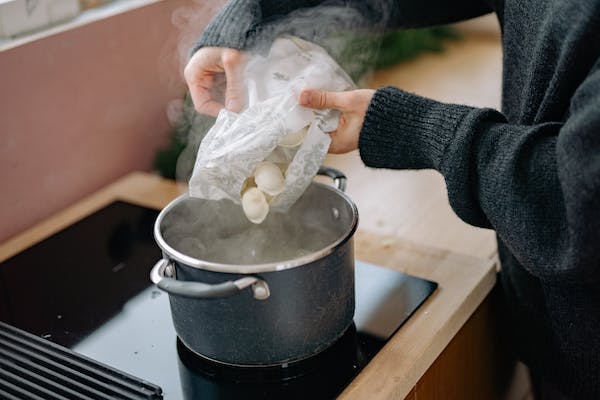In kitchens worldwide, the pressure cooker stands as a time-saving culinary ally, transforming the art of cooking by drastically reducing cooking times. However, amidst the efficiency and convenience, there exists a potential hazard that, if overlooked, can lead to catastrophic consequences – pressure cooker explosions.
Understanding the common mistakes that contribute to these incidents is paramount for home cooks seeking a seamless cooking experience.
This article discusses the nuances of pressure cooker safety, highlighting the pitfalls that can turn a culinary adventure into a perilous one.
Overfilling the Pressure Cooker
The fundamental principle of pressure cookers relies on creating a sealed, high-pressure environment to expedite cooking. However, when users exceed the recommended capacity, the restricted space impedes the proper pressure buildup. This can exert excessive force on the lid and potentially lead to explosive outcomes.
The concern has been exemplified in the recall of 930,000 Insignia pressure cookers by Best Buy, as reported by PhillyVoice. This recall was prompted by incorrect markings inside the pot, misleading users and potentially causing overfilling. Consequently, this led to the expulsion of scalding contents upon opening.
The U.S. Consumer Product Safety Commission documented 31 such hazardous incidents, including 17 burn cases, some classified as second-degree injuries. To ensure safe usage, users are advised not to exceed two-thirds capacity and verify that the pressure valve has dropped before opening.
Not Properly Closing the Lid
Failing to properly secure the lid of a cooker represents another common yet perilous mistake, as it disrupts the crucial process of steam containment. Without a tightly sealed lid, steam can escape, hindering the necessary pressure inside the pot.
This oversight compromises the efficiency of the cooking process and introduces the potential for catastrophic consequences, including explosions.
According to Top Class Action, a striking example of lid-related dangers is evident in the case of Sensio pressure cooker lawsuits. Allegedly equipped with a “dangerously defective lid-locking assembly,” these devices prompted a recall of nearly 860,000 units.
Judy Gibson-Roberts, the plaintiff, asserts that the alleged lid defect led to severe burns for consumers using Sensio pressure cookers. The lawsuit contends that, due to the risk of injuries, the recalled pressure cookers are not fit for their intended purpose of safe cooking.
The case underscores the critical importance of a secure lid in pressure cookers to ensure both effective cooking and the safety of users.
Using a Defective Pressure Cooker
The specter of pressure cooker explosions looms large when manufacturing defects or design flaws compromise its safety features. The lack of a proper design for safe steam pressure release is a common defect that poses risks to users. If the high pressure inside a pressure cooker is not safely released, the consequences upon opening the device can be catastrophic.
A pressure cooker explosion can result in various dangerous scenarios. It can lead from lids forcefully detaching and becoming shrapnel to gaskets blowing and scalding hot water, causing third-degree burns. The safety mechanisms, designed to protect users, can, in turn, become projectiles during an explosion.
Brands like Instant Pot, Crock-Pot, and Tristar have faced lawsuits due to their devices causing harm to consumers.
Furthermore, Consumer Notice highlights different brands of cookers being recalled due to their various design defects. A significant Crock-Pot recall in November 2020 involved over 914,000 units, as the cookers could pressurize when the lid was not fully locked. This defect led to 99 reported burn injuries, ranging from first to third-degree burns.
Additionally, Breville recalled more than 35,000 cookers due to a defective sealing gasket that could unexpectedly release built-up pressure, posing a risk of burns. Instant Pot also faced recalls, with over 1,000 multi cookers recalled in 2015 due to an electric shock risk. The brand further recalled 104,000 multi cookers in 2018 due to a fire hazard.
TorHoerman Law states that acknowledging the potential dangers associated with such defects is paramount. Users must stay vigilant, regularly check for updates or recalls from the manufacturer, and promptly address any known issues.
Using the Wrong Cooking Method
Each type of cooker operates on distinct principles, and an incorrect cooking method can disrupt the balance of pressure and temperature within the device. The repercussions of such errors may include malfunctioning safety mechanisms and a heightened risk of explosions.
Users must familiarize themselves with the specific guidelines provided by the manufacturer for their pressure cooker model. Ignoring these instructions or using an inappropriate cooking method jeopardizes the cooker’s functionality and introduces potential safety hazards.
Leaving the Pressure Cooker Unattended
The operation of a pressure cooker relies on maintaining a delicate balance of pressure and temperature. When left unattended, this equilibrium can be disrupted, leading to an unsafe buildup of pressure.
As the pressure inside the pot escalates, the lid may be forcibly expelled, resulting in a potentially dangerous explosion.
Users are advised to stay vigilant and present throughout the cooking duration, ensuring they can promptly address any irregularities. The simple yet crucial act of never leaving a pressure cooker unattended serves as a fundamental safety practice.
Conclusion
The art of pressure cooking, while a time-saving marvel in the kitchen, demands a meticulous approach to ensure safety. The mistakes that can lead to pressure cooker explosions underscore the importance of user awareness and adherence to safety guidelines.
As we embrace the convenience of these kitchen tools, let us do so with a keen eye on safety. By staying vigilant; users can transform their cooking experience into a secure and efficient culinary venture, free from potential hazards.
Read Also: Everything You Need to Know About Cat Food
